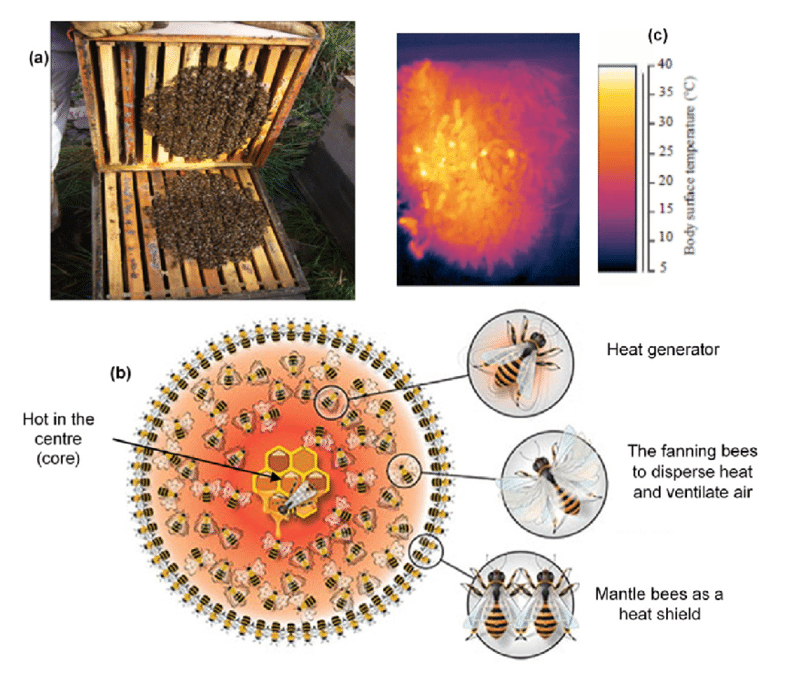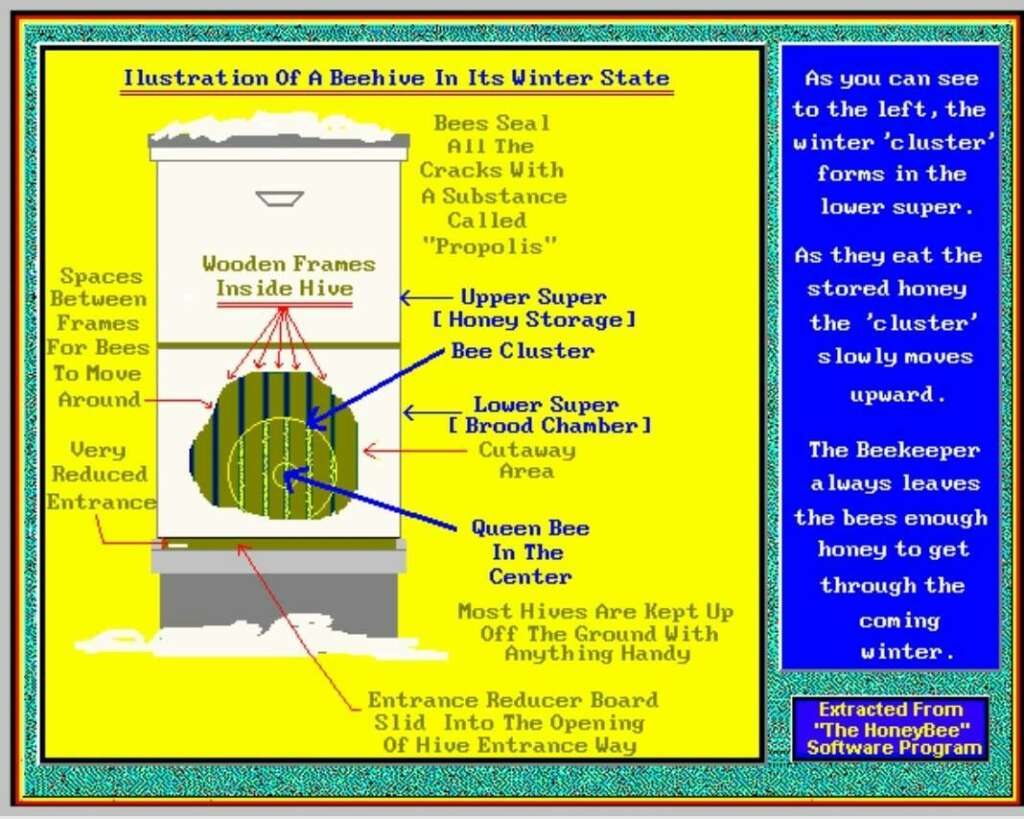Here's what's keeping us buzzing...
No upcoming events
Winter and the Honeybee

Winter is by far the most difficult time for honeybees. While the honeybee has adapted to dealing with cold weather, they are not native to climates that experience sub zero winters for months at a time.
On its own, a honeybee can survive about a few minutes once the temperature reaches around 7 degrees Celsius. Without bees in the hive, temperatures inside would not be much much warmer than those outside. However add in thousands of bees and a truly remarkable thing happens.
A simple example using people instead of honeybees.
Imagine standing alone with no jacket in an uninsulated garage when it is very cold outside. Eventually even humans would not survive for very long. However if you started moving around, that movement would burn calories and create a small amount of heat which would help you to survive a little longer. Now imagine you pack your garage wall to wall with people you like (because you would have zero personal space between you, no social distancing here). The amount of heat generated just from breathing would probably be enough to keep everyone alive for an even longer period of time. Even then if things got colder and everyone moved around a bit, it would probably generate more heat to keep everyone alive for days, even weeks, providing there is a continuous supply of water, food, oxygen…and deodorant.
As you can see from the images, there is a much more organized and complex structure than this crude human example. When temperatures reach between 10 to 14 degrees Celsius, honeybees all snuggle together in their hives partially surrounding their frames of wax and honey, to form a big ball of bees called a winter cluster. As the weather gets colder, the cluster tightens up to conserve and generate more intense heat. In the middle of the cluster you'll find the queen where it is a toasty 35 degrees Celsius (even if it is minus 10 outside), the inner part of the cluster is a balmy 27 degrees Celsius and the outer shell is around 9 degrees Celsius.
But if they can't survive at 7 degrees Celsius for more than a few minutes, how could the ones on the outside survive at 9 degrees for very long?
This is true, but heating the entire cluster to what it would be like on a summer day is not possible. So the bees on the outside are only there for a short period. There is a constant rotation of bees moving to the outer edge and folding back to the inside. Using our garage example, if a few people went outside in small groups for rotations of 2 or 3 minutes, the entire garage population would be ok. But if only one group stayed out there for hours and hours, gradually your garage of people would start to thin out due to those groups not surviving. Eventually the garage would have less and less people to create and conserve heat and eventually everyone would succumb to the cold.
So how do bees exercise to keep warm?
They vibrate their abdomens and some of that energy gets converted into heat (think rubbing your hands together). This warmth is then dissipated by other bees fanning the air surrounding them with their wings. All this activity creates a lot of noise too. If you are ever in the area, you must make a trip to listen to the hives. Putting an ear against the side and hearing that intense humming from the cluster is remarkable!! It can be minus 20 out and yet there are honeybees just buzzing away inside. We never get tired of doing this and it seems to help make the winter seem less harsh - knowing your bees are happily buzzing away - waiting patiently for spring.
Now in order to power this massive heat source, the bees need fuel. And their fuel is stored honey which they consume a lot of. This is one reason we never overharvest. We typically want 80 to 100 pounds of honey left in the hive going into winter to prevent the potential for starvation and to help insulate the hive to retain heat. Do we weigh each hive? Oh no, Tim has a much more scientific method that is fun to watch. Basically he puts all his claimed weight of 200 pounds (add 25% to this for his true weight) and tries to budge the hive . If he can barely budge the hive then the colony is good to go.
While they might not consume all of that honey, having it available in different positions in the hive is crucial because when it gets really cold the cluster has a difficult time repositioning itself. Some colonies can actually die of starvation even with honey in another part of the hive just a few inches away! In fact, starvation and moisture, not the cold weather, are the leading causes of strong, healthy colonies not making it through winter.
Therefore, as a backup, we add sugar cakes inside at the top of the hive. This is a reserve in case they burn through their stores. It also serves to further insulate the hive and absorbs a bit of moisture. In part II we will go into more detail on the methods we use at onemillionbees to help give your bees the best shot at surviving the winter.
So there you have it, honeybees basically consume honey, exercise and snuggle together for months on end to get through the winter. And we just cross our fingers and hope we did everything right to help them make it into the spring.
Currently our winter survival rate is 80% over the past 2 years where in Ontario the average ranges around 65 - 75% so even though we are just at 10 colonies now and 80% survival is above average, that's a small sample size but we are generally happy with that number so far. As we grow and learn, we'd like to get to 90% one day if possible, this with the realization there could be one year where most or even all of the bees do not make it (this happens to even the most experienced beekeepers due to so many factors out of our control). Coming to grips with the fact that no matter how much we care for the bees, knowing that one, two or all colonies may perish is something we have to prepare for because it is happening more frequently than ever. It's a regretful but humbling life lesson all beekeepers must eventually learn to accept when keeping bees in today's world.

